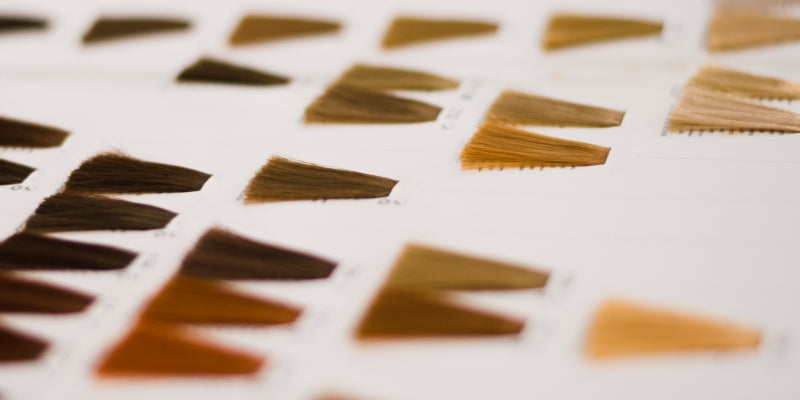
Color & Contrast: Match Light and Skin for Real Hair Systems
Color is often the first giveaway. A flat, single-tone piece can look "floating" or fake when lighting shifts. This article explains color architecture for hair systems—root depth, highlights, lowlights, and contrast strategies that ensure consistent, believable appearance across daylight, indoor lighting and photography.
Introduction — Why Color & Contrast Are the First Truths
In photography and real life, contrast defines form. For hair systems, contrast is created by root depth, mid-tone gradation and selective highlights or lowlights. A piece that reads "alive" in daylight should also behave well indoors and in flash. If color is handled poorly, the system will either appear flat, or it will "float" above the scalp—a common complaint.
Lighting Fundamentals: How Light Changes Perception
Before choosing color, understand three common lighting environments and what they reveal.
Daylight vs Overcast — high contrast vs diffused light
Direct sunlight produces higher contrast and can emphasize texture and highlights. Overcast light is softer and flattens contrast. A natural-looking system should hold detail in both: roots that are too flat lose depth in sunlight; overly contrasted highlights in sunlight can look streaky indoors.
Indoor tungsten/LED — warm and cool shifts
Indoor lighting changes color temperature—warm tungsten pulls yellow/orange tones; cool LEDs pull blue. A balanced color strategy anticipates these shifts so the piece doesn’t look too warm or too cool in typical indoor settings.
Flash & Studio Lights — highlight and reflection control
Studio flash exposes surface reflection. Systems with harsh surface sheen or single-tone fibers can appear shiny and artificial under flash. Color work combined with low-reflective finishes helps preserve a natural look when photographed.
Color Architecture of a Hair System
Color architecture is the deliberate layering of tones across root, mid-length and tips to create depth and natural variability.
Root depth & gradient — adding perceived depth
Darker roots create the illusion of depth where the hair meets the scalp. The root shadow must be subtle—too dark and it looks artificial; too light and the piece flattens. A carefully graded root provides dimension under all lighting conditions.
Natural highlights & subtle streaking
Highlights, when used sparingly and placed in natural zones, catch light in motion and help break up uniform color. These should mimic how natural hair ages and catch ambient light rather than look like painted streaks.
Lowlights for shadow and realism
Lowlights add shadow and contour—especially useful around crown whorls and where the hair parts. Combined with root depth, lowlights help create the complex micro-variations that eyes interpret as real.
Skin Tone & Contrast Matching
Matching hair to skin is not about "perfect match" but about contrast harmony. The right contrast level ensures that the hair integrates visually with the face.
Low contrast matches for lighter skins
For fairer skin tones, slightly lower contrast between root and mid-tone can read more natural, especially in soft indoor light. The goal is a gentle transition that does not create a hard edge.
High contrast choices for darker skin tones
Darker skin tones often benefit from richer root depth and slightly higher mid-tone contrast. This adds life without appearing painted. Avoid excessive highlights that can read as streaks under sunlight.
Age-based color pairing (cool vs warm undertones)
Consider undertones. Warmer undertones pair well with subtle warm tints; cooler undertones pair with neutral or slightly cool shades. The aim is cohesion, not exact mimicry.
How to Evaluate Color Online: Photos & Lighting Tests
Use an objective photo checklist when evaluating color online. Request or look for these visuals on product pages.
Ask for multi-light photos (sunlight, shade, indoor)
A panel showing the same piece in direct sunlight, shaded daylight and typical indoor light quickly reveals color behavior. Compare how the root, mid-tones and highlights read across images.
Root swatch & small area close-up
A close-up of the root area with scaled detail (showing a finger or ruler) helps you judge how subtle the root shadow is and whether knots or texture create unwanted sheen.
Short video clip to check movement & reflectivity
A brief clip of the system in motion under mixed light shows how color gradations catch and release light—an important test to avoid surprises after purchase.
Color-Focused Hair System Types
When browsing, these color-oriented system categories help you shorten the choice set—each describes a color philosophy rather than a specific SKU.
Root-Shadowed Multi-Tone System
Deep roots with gradual mid-tone transitions—designed for consistent depth under daylight and studio conditions.
Shop Root-Shadowed SystemsHighlight-Blend System
Subtle highlights placed for motion and catch—good for sunny environments and for adding micro-variation in photos.
Shop Highlight-Blend SystemsLow-Reflect Natural Tint System
Color and finish engineered to minimize flash reflection—favors consistent appearance for photography and studio lights.
Shop Low-Reflect SystemsShop Color-Calibrated Hair Systems
Get the color that reads right in every light.
Browse Angelremy men’s hair systems with color approaches designed for real-world lighting.
Shop Angelremy Men’s Hair SystemsFAQ
Why does my hair system look different outside vs inside?
Different light sources change color temperature and contrast. A thoughtfully built piece with root depth and multi-tone transitions will adapt more naturally across environments.
Are highlights necessary?
When used subtly and in natural zones, highlights help the hair catch light and move more convincingly. They should mimic natural hair distribution rather than create obvious streaks.
Conclusion — Color Checklist Before You Buy
Use this quick checklist before committing to a color:
- View multi-light photos: sunlight, shade and indoor light.
- Inspect a close-up root swatch to assess root depth and knot texture.
- Request or review a short motion clip to judge how highlights and shadows behave in motion.
- Match contrast to your skin tone: aim for harmony, not a perfect match.
Want a color that reads real? Explore Angelremy Men’s Hair Systems








